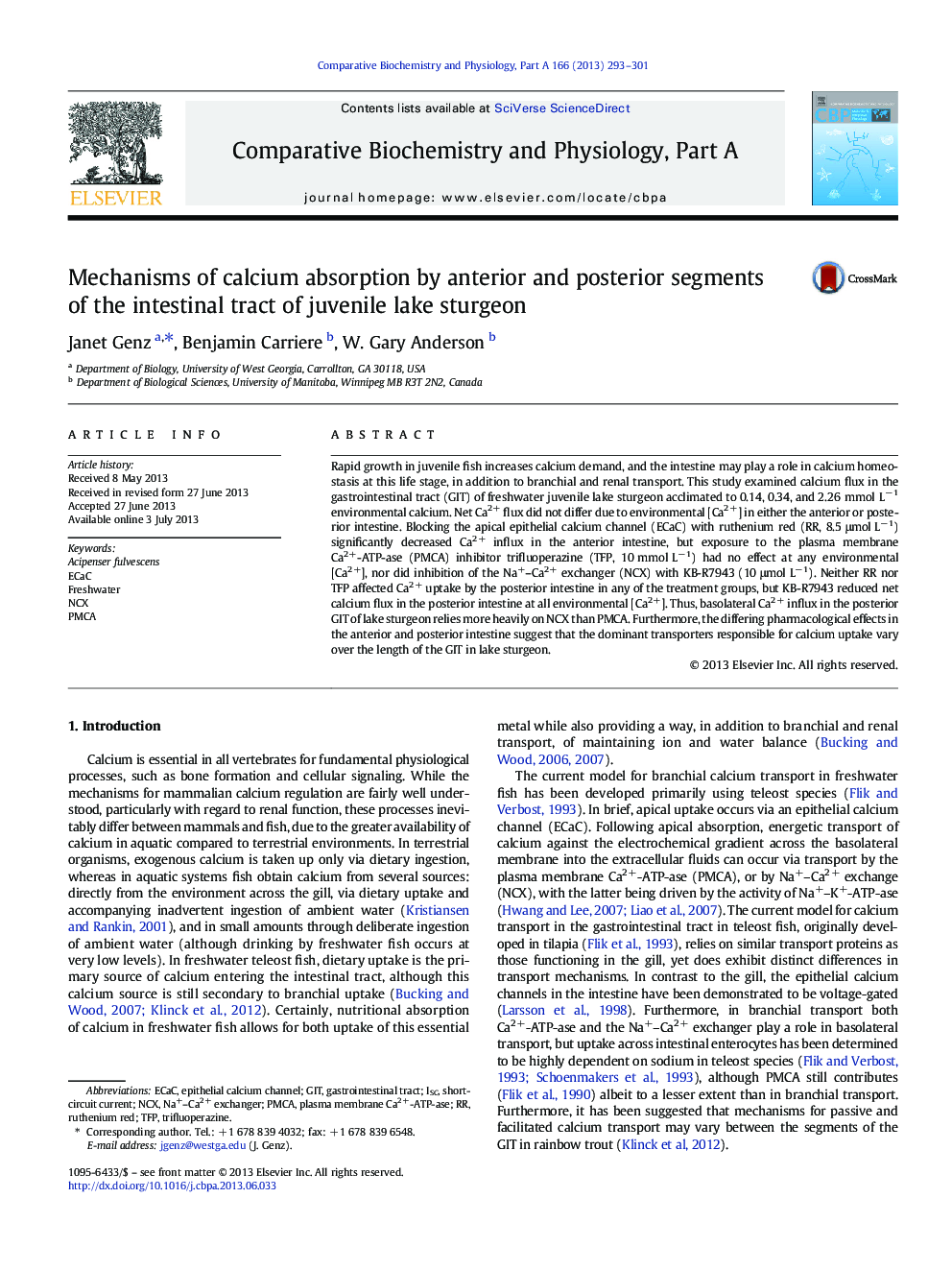| Article ID | Journal | Published Year | Pages | File Type |
|---|---|---|---|---|
| 10818815 | Comparative Biochemistry and Physiology Part A: Molecular & Integrative Physiology | 2013 | 9 Pages |
Abstract
Rapid growth in juvenile fish increases calcium demand, and the intestine may play a role in calcium homeostasis at this life stage, in addition to branchial and renal transport. This study examined calcium flux in the gastrointestinal tract (GIT) of freshwater juvenile lake sturgeon acclimated to 0.14, 0.34, and 2.26 mmol Lâ 1 environmental calcium. Net Ca2 + flux did not differ due to environmental [Ca2 +] in either the anterior or posterior intestine. Blocking the apical epithelial calcium channel (ECaC) with ruthenium red (RR, 8.5 μmol Lâ 1) significantly decreased Ca2 + influx in the anterior intestine, but exposure to the plasma membrane Ca2 +-ATP-ase (PMCA) inhibitor trifluoperazine (TFP, 10 mmol Lâ 1) had no effect at any environmental [Ca2 +], nor did inhibition of the Na+-Ca2 + exchanger (NCX) with KB-R7943 (10 μmol Lâ 1). Neither RR nor TFP affected Ca2 + uptake by the posterior intestine in any of the treatment groups, but KB-R7943 reduced net calcium flux in the posterior intestine at all environmental [Ca2 +]. Thus, basolateral Ca2 + influx in the posterior GIT of lake sturgeon relies more heavily on NCX than PMCA. Furthermore, the differing pharmacological effects in the anterior and posterior intestine suggest that the dominant transporters responsible for calcium uptake vary over the length of the GIT in lake sturgeon.
Keywords
Related Topics
Life Sciences
Biochemistry, Genetics and Molecular Biology
Biochemistry
Authors
Janet Genz, Benjamin Carriere, W. Gary Anderson,
